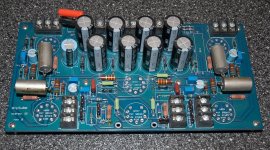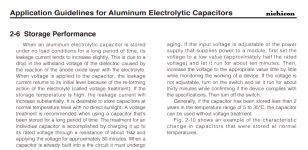I’m sure this has been asked a bajillion times, but here’s +1.
I have a populated diytube ST-35 pcb that a friend gave me back in 2010. It was populated I’m assuming 3-5 years before that. I assume it’d be best to swap out all the Nichicon VZ ps caps and the few others as well as opposed to trying to reform them in circuit?
I have a populated diytube ST-35 pcb that a friend gave me back in 2010. It was populated I’m assuming 3-5 years before that. I assume it’d be best to swap out all the Nichicon VZ ps caps and the few others as well as opposed to trying to reform them in circuit?
Attachments
The problem is if one leaking or dried out, you don't know which is it.
I'd take all them out and check for capacity/ESR. Then reform them separately with 10% (one day), 50% (another day) and 100% (yet another day) specified voltage, discharge them and measure again. If this is too troublesome, just swap them all for new.
I'd take all them out and check for capacity/ESR. Then reform them separately with 10% (one day), 50% (another day) and 100% (yet another day) specified voltage, discharge them and measure again. If this is too troublesome, just swap them all for new.
Just follow the Nichicon guidelines. No need to replace them, if they have been stored properly. I've got 20+ years old Nichicon VZ capacitors and they work just fine. Slight ESR and leakage increase compared to brand new ones, but within normal parameters and still way better than new low-cost capacitors.
Attachments
The board has always been stored inside our conditioned home(s), never subjected to heat/cold and never had any power out to them. It’s one of those projects I just need to finish but never seem to get around to. All the other parts on the board are very good quality as well (Mills, Dale RN, Holco, Kiwame, etc…Just follow the Nichicon guidelines. No need to replace them, if they have been stored properly. I've got 20+ years old Nichicon VZ capacitors and they work just fine. Slight ESR and leakage increase compared to brand new ones, but within normal parameters and still way better than new low-cost capacitors.
There are lots of urban legends regarding E-caps. In fact, most are unfounded, like another legend: inductivity of E-caps, which has been eradicated as early as the sixties.
In fact, 99.9% of NOS, post-eighties caps will happily survive a brutal cold-start without problem. The circuit they are in could struggle with the initial surge of reforming current, but it is rarely a problem, except in marginally designed circuits. The cap itself is unlikely to have problems, for a simple physical reason: energy. To heat it up to the boiling point, the voltage*current*time product needs to reach values of several joules, which is impossible with modern caps. Good caps from the seventies, like Siemens for example are in the same league.
Older or low quality caps could have problems, and should be reformed, especially high voltage types: I never power-up a vintage radio set without precautions, but more modern components are basically plug-and-play.
I would be more worried about the carb-comp resistors I see on your board: they can easily drift upwards, and upset the bias point of the circuits
In fact, 99.9% of NOS, post-eighties caps will happily survive a brutal cold-start without problem. The circuit they are in could struggle with the initial surge of reforming current, but it is rarely a problem, except in marginally designed circuits. The cap itself is unlikely to have problems, for a simple physical reason: energy. To heat it up to the boiling point, the voltage*current*time product needs to reach values of several joules, which is impossible with modern caps. Good caps from the seventies, like Siemens for example are in the same league.
Older or low quality caps could have problems, and should be reformed, especially high voltage types: I never power-up a vintage radio set without precautions, but more modern components are basically plug-and-play.
I would be more worried about the carb-comp resistors I see on your board: they can easily drift upwards, and upset the bias point of the circuits
Odds are on your side that they're fine. I'd power up with a dim bulb or fuse. I'd probably power for 10 seconds, followed by 20, by 40 and then a couple minutes. That will keep the temperature down if the leakage current is high. Then burn it in for a while. After that, being paranoid, I'd test it under high line conditions, because that usually stresses the heck out of things. Or, just let 'er rip. As above, odds are high that it will be fine.

